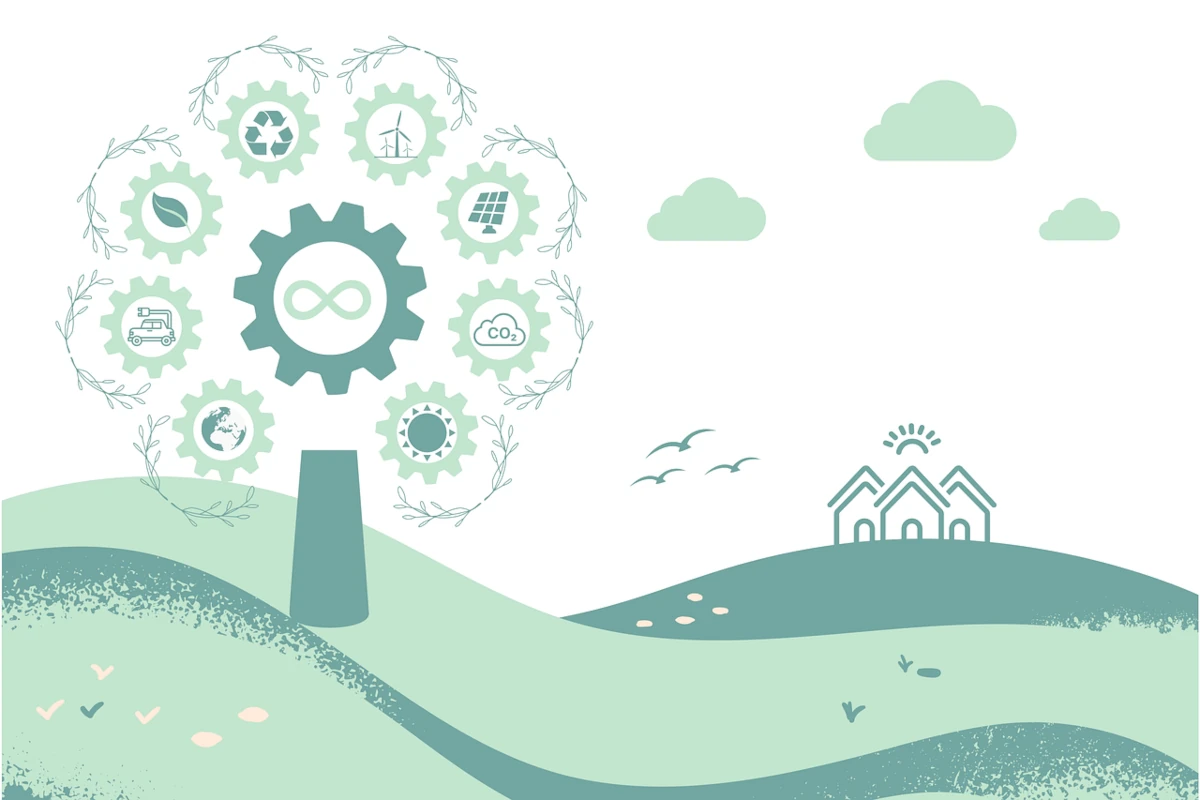
Chris Williams of software firm ISB Global makes the case for digitalisation as the means for a less wasteful, more resource-efficient global economic model.
A circular economy involves building a ‘zero waste’ approach into everything we do. From reducing the volume of raw materials needed to make products, to ensuring there is a sustainable approach for disposing of products when they reach their end of life – these steps all reduce waste, which in turn reduces greenhouse gas emissions and conserves the environment.
The road to building a sustainable circular economy is now a digital issue. For it to become a reality, business, organisations, and governments must use digital to put in place their own low-waste circular approaches.
Digitalisation can not only enhance operational performance by providing clear visibility across all business functions but also allow better access to forecasting data. A low code approach can play a key role in this process.
Low-code software as a catalyst for transformation
With the emergence of low code software over the past 20 years, organisations have been able to achieve their digital transformation, faster and with greater accuracy.
The benefits are clear. Low code-based software applications reduce costs making collaboration easier and speeding up development and rollout, as well as supporting new features and providing continual updates, which can be designed, programmed, tested and released in a fraction of the time of traditional hand coding.
Its ability to bring platforms and applications to market more quickly also allows organisations to respond to new developments, add new features and functionality, and deliver a better user interface and user experience
ISB Global has used our partner OutSystem’s low code platform to harness these advantages and meet the particular needs of waste management operators and other companies who use our Waste and Recycling One platform to build an adept sustainable operating model.
Platforms like this gives organisations the all-important insight they need to become more agile and respond to new developments and challenges as they arise.
Digitalisation can make the circular economy a reality
There are three principal ways in which digitalisation can reduce environmental impact and facilitate a more circular low-waste economy:
- Improving resource efficiency
The extraction of raw materials used to make products – whether by drilling, mining, quarrying or farming – damages the environment, generates harmful emissions, and depletes the planet’s natural resources.
To move to a circular economy, manufacturers and producers must identify and source alternative materials that are less environmentally harmful: or reuse existing materials. Digitalisation enables businesses to track materials through their lifecycle: and also, accurately measure the benefits of using alternative materials or reusing existing ones.
- Increasing resilience
Companies are already having to deal with more incidents of supply disruption and shortages caused by extreme weather, conflict or other unexpected events. These occurrences are likely to increase in future.
The onus now is on businesses to secure resources and maintain supply chains or establish alternative ones. AI-assisted forecasting that accurately predicts supply and demand needs, and which also identifies potential weaknesses in operations before they become a problem, gives organisations the means to boost their resilience by pre-empting possible supply chain disruptions and shortages.
- Smarter designs for a circular approach
Digital tools will help businesses to design products and services that support a circular economy – everything from assessing the suitability of new materials: re-designing products where necessary, managing assembly and disassembly: and separating materials at the end of a product’s life for reuse elsewhere.
Digitalisation has the transformational potential to adapt how businesses work and establishing a less resource-intensive, more circular low-waste economy. This is essential for conserving our environment at a local, national and international level.
The implementation of different digital technologies has the potential to make a low-waste circular economy a reality by enhancing the workflows and operational efficiency. Coupled with old-fashioned human inventiveness and endeavour, the latest digital technologies can offer significant opportunities for progress.
Rather than seeing digitalisation as a necessary operational cost, companies should instead regard it as an investment that will strengthen their business, boost performance, and inspire new ideas and opportunities – all while contributing to a healthier, more sustainable way of life.
Chris Williams is CEO of ISB Global, a UK-based provider of planning software for the global waste management and recycling industry.






